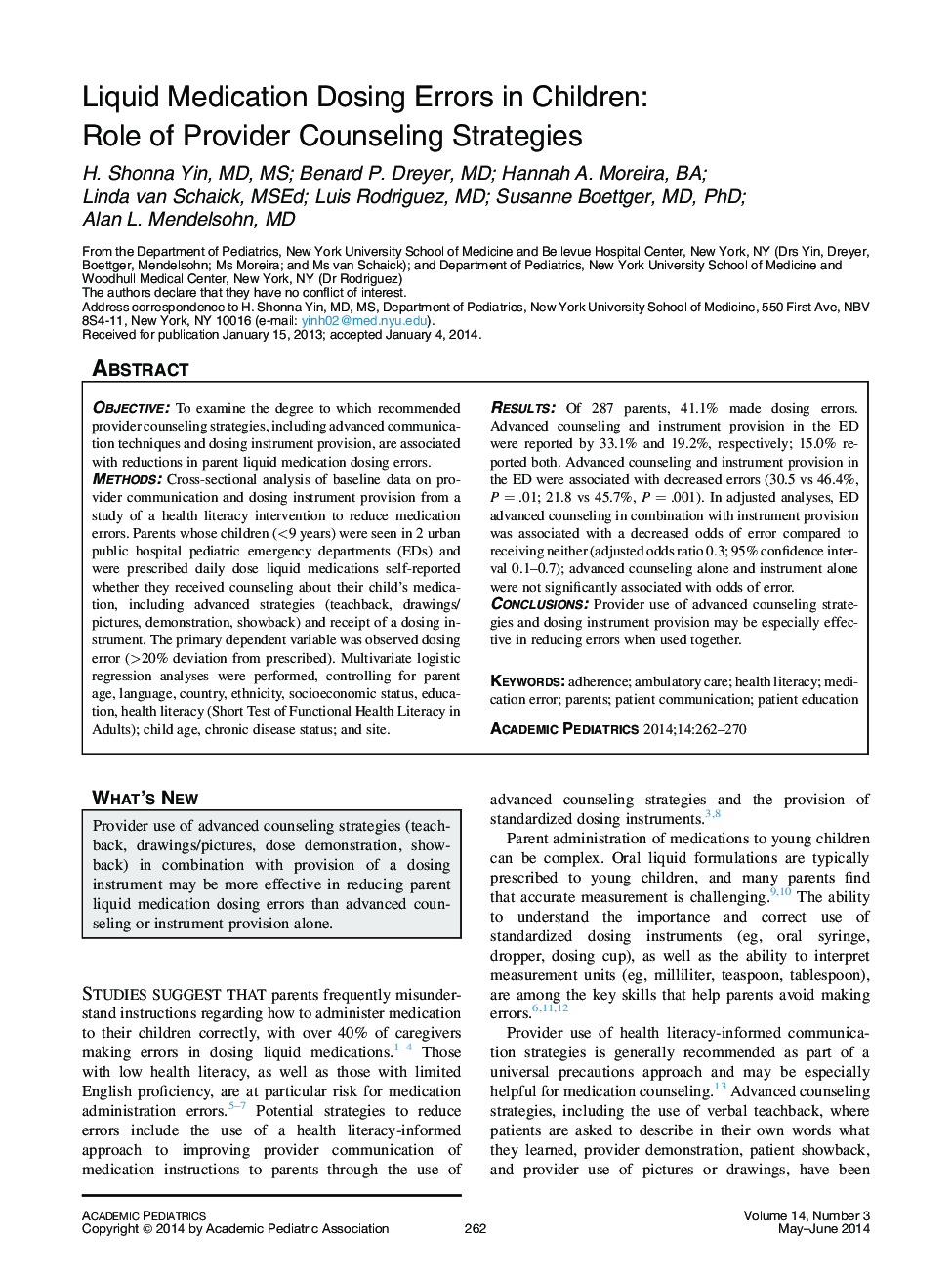| کد مقاله | کد نشریه | سال انتشار | مقاله انگلیسی | نسخه تمام متن |
|---|---|---|---|---|
| 4139369 | 1272204 | 2014 | 9 صفحه PDF | دانلود رایگان |
ObjectiveTo examine the degree to which recommended provider counseling strategies, including advanced communication techniques and dosing instrument provision, are associated with reductions in parent liquid medication dosing errors.MethodsCross-sectional analysis of baseline data on provider communication and dosing instrument provision from a study of a health literacy intervention to reduce medication errors. Parents whose children (<9 years) were seen in 2 urban public hospital pediatric emergency departments (EDs) and were prescribed daily dose liquid medications self-reported whether they received counseling about their child's medication, including advanced strategies (teachback, drawings/pictures, demonstration, showback) and receipt of a dosing instrument. The primary dependent variable was observed dosing error (>20% deviation from prescribed). Multivariate logistic regression analyses were performed, controlling for parent age, language, country, ethnicity, socioeconomic status, education, health literacy (Short Test of Functional Health Literacy in Adults); child age, chronic disease status; and site.ResultsOf 287 parents, 41.1% made dosing errors. Advanced counseling and instrument provision in the ED were reported by 33.1% and 19.2%, respectively; 15.0% reported both. Advanced counseling and instrument provision in the ED were associated with decreased errors (30.5 vs 46.4%, P = .01; 21.8 vs 45.7%, P = .001). In adjusted analyses, ED advanced counseling in combination with instrument provision was associated with a decreased odds of error compared to receiving neither (adjusted odds ratio 0.3; 95% confidence interval 0.1–0.7); advanced counseling alone and instrument alone were not significantly associated with odds of error.ConclusionsProvider use of advanced counseling strategies and dosing instrument provision may be especially effective in reducing errors when used together.
Journal: Academic Pediatrics - Volume 14, Issue 3, May–June 2014, Pages 262–270
